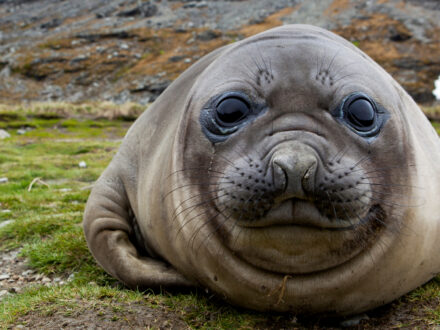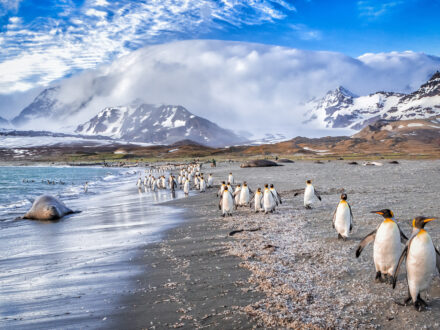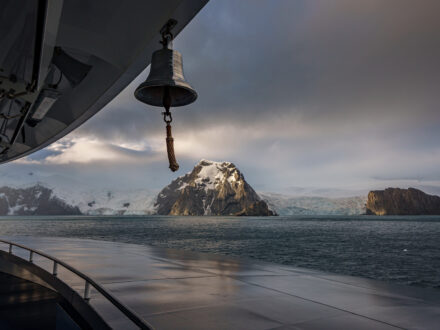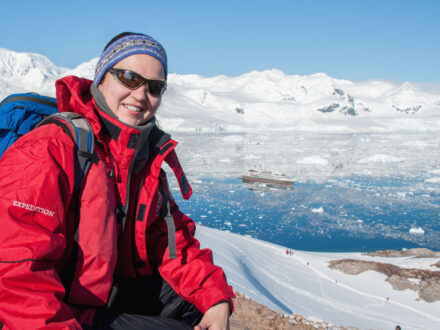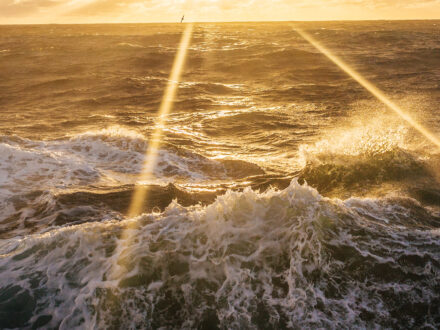Antarctica Hotels: The 10 Best Places To Stay In Antarctica
- Are There Hotels in Antarctica?
- Antarctica Lodges & Camps
- The 10 Best Places To Stay In Antarctica
- 1. Whichaway, Queen Maud Land (White Desert)
- 2. Echo Camp, Queen Maud Land (White Desert)
- 3. Oasis Camp, Queen Maud Land (Ultima)
- 4. Wolf’s Fang Camp, Queen Maud Land (White Desert)
- 5. Union Glacier Camp, Ellsworth Land (ALE)
- 6. Three Glaciers Retreat, Ellsworth Land (ALE)
- 7. South Pole Camp (ALE)
- 8. Vinson Base Camp, Ellsworth Land (ALE)
- 9. Gould Bay Camp, Queen Elizabeth Land (ALE)
- 10. Research Stations
- Cruise Accommodations
- Antarctica Accommodations: A Range of Options
There’s more than one way to see (and do) the White Continent. Upscale sightseeing, in-depth ecotourism, hardcore outdoor adventure, and combinations thereof, offered across a wide range of itineraries and modes of transport, mean a wonderful variety of Antarctic travel experiences are available. But how about accommodations? Can you stay in Antarctica?
Absolutely! And, to reinforce our opening message, you’ve got options in that department. From onboard cabins offshore to farflung (but rather well-appointed) ice-sheet quarters, there are more choices than you might imagine when it comes to bedding down at the bottom of the world. In this article, we’ll explore the possibilities.
Are There Hotels in Antarctica?
There are no hotels in Antarctica, and that’s rather a good thing. Decades of international cooperation, research, and management have been aimed at keeping this most untouched of the world’s continents as pristine as possible through (understandably) exacting regulation of tourism.
Yet, not least when the environmental realities of this coldest, highest, windiest, and driest continent are considered, the land-based accommodations that do exist in Antarctica can be remarkably swanky. They range from temporary and seasonal ice camps to a few more permanent installations that, nonetheless, only serve guests during the tourism season of the austral summer.
Antarctica Lodges & Camps
While the majority of Antarctic visitors stay aboard cruise ships, there are a handful of terra firma (and ice-shelf) lodgings worth considering. If you want to actually sleep in the interior of the White Continent, the following locations are go-to choices, though more expensive than your average ship-based berth.
The most luxurious setups—the closest things to Antarctica hotels, basically—are the Whichaway and Echo camps operated by the company White Desert and the Oasis camp operated by Ultima, while the more adventurous tented camps listed are operated by the company Antarctic Logistics and Expeditions (ALE). White Desert’s and Ultima’s camps are reached from flights out of Cape Town, while you’ll fly from Punta Arenas to stay at the ALE properties.
The 10 Best Places To Stay In Antarctica
1. Whichaway, Queen Maud Land (White Desert)
Whichaway is essentially a luxury wilderness lodge set on a frozen lakeshore in Queen Maud Land’s Schirmacher Oasis. Whichaway hosts guests in six eco-friendly fiberglass pods, complete with heating, wood floors, multiple beds, ensuite washroom, and other luxuries. Communal pods at Whichaway serve as dining quarters (hosting gourmet, multi-course chef-prepared meals), polar library, and hangouts, with a sauna available to boot. From fireside cocktails to ice-tunnel forays, ziplining, fatbiking, ice-climbing, abseiling, and flights to an emperor-penguin colony, there’s plenty to do with Whichaway as your base camp.
2. Echo Camp, Queen Maud Land (White Desert)
Opened in 2022, White Desert’s Echo Camp—a short flight from Whichaway—includes space-travel-inspired “Sky Pods” providing thoroughly one-of-a-kind boutique accommodations with floor-to-ceiling windows and ensuite washrooms. Embodying a sort of “futuristic-luxury” aesthetic, the structures are made from composite fiberglass and serve up sumptuous views out across white flats toward impressive peaks. Enhancing the otherworldly vibe, the Echo Sky Pods come decorated with photos taken from the International Space Station by retired astronaut Terry Virts. Activities for camp-dwellers range from abseiling, fat-biking, and skiing to scaling nunataks (peaks fully swaddled by ice) and SkiDoo touring.
3. Oasis Camp, Queen Maud Land (Ultima)
Just a short 30-minute drive from Novo Air Base, nestled in an amphitheater of nunataks, the Ultima Oasis Camp offers an intimate and inviting refuge in the heart of Antarctica’s icy expanse. With breathtaking easterly views of a serene ice valley and a pristine lake, this boutique camp accommodates up to 20 guests across three beautifully appointed wooden cabins with rooms of varying sizes, to accommodate individuals, couples, pairs or groups. Shared bathrooms are kept spotless, while communal dining in the Lounge & Dining Cabin features hearty, chef-prepared meals paired with fine South African wines and panoramic views through expansive bay windows. Activities include guided hikes to the nunatak peaks and the edge of the continental ice shelf, as well as rejuvenating sauna and ice bath sessions.
4. Wolf’s Fang Camp, Queen Maud Land (White Desert)
Not far from Echo, the glacier-set Wolf’s Fang Camp puts the spiky glories of the Kurze Mountains out your window, with heated bedroom and shower tents as well as a cozy (and toasty) lounge and dining area, plus the Ice Bar along the private Wolf’s Fang Runway. Activities include plenty of mountaineering and ice-climbing opportunities, given the rock peaks and nunataks near at hand, plus skiing, fat-biking, abseiling, SkiDoo outings, and more.
5. Union Glacier Camp, Ellsworth Land (ALE)
Another company, Antarctic Logistics and Expeditions (ALE), runs its own collection of Antarctica tent camps. The flagship location—and the jumping-off point for experiences at the other camps—is Union Glacier Camp in West Antarctica, which can host up to 70 guests and includes a polar library, dining tent (with high-end, fresh-cooked meals served up), and other amenities. The spacious, two-person sleeping tents aren’t heated, but they’re double-walled, bathed in that continuous summer polar sunshine, and insulated by wooden floors. Activities out of Union Glacier Camp include fat-biking a groomed, six-mile trail, hiking, cross-country skiing, and skydiving.
6. Three Glaciers Retreat, Ellsworth Land (ALE)
Close by is the more luxurious Three Glaciers Retreat, with roomy, heated, double-walled private tents complete with satin-sheet-and-duvet-enhanced bedding, charging stations, and private patios. Hosting a total of 16 guests, this camp enjoys a magisterial setting in the Ellsworth Mountains at the heads of the Schneider, Schanz, and Driscoll glaciers, tucked at the foot of Mount Sporli. Meals are prepared with fresh, flown-in ingredients from Chile, and there are loads of things to do: from snowmobiling, skiing, trekking, and mountaineering to matches on the snow volleyball court.
7. South Pole Camp (ALE)
Then there’s ALE’s South Pole Camp, set at roughly 11,000 feet just a stone’s throw from the actual Geographic South Pole—the property’s justly marketed as “the World’s Southernmost Resort”— and offering unrivaled access to that singular landmark. A marked, 0.6-mile trail links the camp and the South Pole itself, including the Amundsen-Scott South Pole Station. Heated, double-walled Arctic Oven tents serve as the accommodations, with a spacious, heated dining tent functioning as the social hub. There are tent washrooms but no showers here. Besides South Pole hiking or skiing, activities here include wide-ranging lectures on Antarctic topics.
8. Vinson Base Camp, Ellsworth Land (ALE)
There’s also Vinson Base Camp, launchpad for climbs up Antarctica’s loftiest peak: the 16,050-foot Vinson Massif, attained via two field campsites supported by the base camp. The camp lies along the Branscomb Glacier, with guests sleeping in all-season mountaineering tents up to the challenges of gnarly cold and wind, and a heated center-of-operations tent with a dining and lounge area. Toilets take the form of open-air setups screened by privacy walls and offering incredibly scenic sightlines.
9. Gould Bay Camp, Queen Elizabeth Land (ALE)
Another notable ALE holding is the Gould Bay Camp in the southern Weddell Sea, the sole option for tenting out on the sea ice, and coveted for its close proximity to an emperor-penguin colony. Set along the Ronne Ice Shelf, the camp puts you up in single- or double-occupancy tents (unheated—you’ll stay snug in polar-rated sleeping bags on sleeping mats) about a mile from the penguin colony, with a flagged route between. The focus here is on observing and photographing those biggest of all penguins, but you’ll enjoy tasty meals (and take care of business via field toilets).
10. Research Stations
Whilst this guide mainly focuses on the Antarctica accommodations readily available to tourists, it’s also worth noting that those with special credentials—namely, scientists, journalists, and support technicians—have the option of staying at research bases in Antarctica. Such research-base lodgings are well-appointed, given they serve the White Continent’s only long-term residents (including a thousand or so personnel weathering the polar winter). Jobs in Antarctica can be quite competitive, and applicants typically have the best shot by applying to the research outposts maintained by their home nations (if any). Certain countries, including the U.S., the U.K., and Australia, offer a few limited opportunities for creative writers and artists to stay at Antarctic bases.
Cruise Accommodations
Whilst the hardiest of explorers may consider such camps as those listed above, most people opt to see the White Continent—and a greater variety of visitor sites—by ship, typically cruising along the Antarctic Peninsula. These Antarctic sails may take place on smaller, more nimble expedition vessels or larger, more sumptuously outfitted luxury cruise ships. Berths on such cruise ships are all comfortable and well-appointed, but—and this isn’t exactly rocket science—you’ll find the most spacious, decked-out accommodations on the luxury ships. Upper-end suites and staterooms on these grander vessels may come with the option of a butler and other glamorous services: quite the treat on a voyage to the ends of the Earth!
While lots of cruises include landfalling opportunities—strictly controlled to protect the integrity of the lightly trammeled Antarctic environment—you’ll generally be sleeping offshore in a cabin. But many also offer the chance to camp out (via bivy sack or tent) for a night on the Antarctic Peninsula mainland or a nearshore island.
Antarctica Accommodations: A Range of Options
As the above list hopefully suggests, there’s really something for everybody when it comes to places to stay in Antarctica. Shipboard lodgings make the most sense for many (not least families and first-time visitors), providing a fine introduction to the White Continent’s marvels and encompassing a wide range of experiences: from basic wildlife-watching and scenery-basking cruises along the Antarctic Peninsula to farther-flung forays beyond the Antarctic Circle and into the Ross Sea.
Honeymooners are sure to enjoy both romantic onboard accommodations as well as the once-in-a-lifetime luxuries of, say, Whichaway, Echo, or Union Glacier camps. Mountain climbers are likely to steer their way to Vinson Base Camp, while those hoping to clap eyes (and camera lenses) on those iconic emperor penguins can’t do much better than for nearby accommodations than Gould Bay Camp.
Disclaimer
Our travel guides are for informational purposes only. While we aim to provide accurate and up-to-date information, Antarctica Cruises makes no representations as to the accuracy or completeness of any information in our guides or found by following any link on this site.
Antarctica Cruises cannot and will not accept responsibility for any omissions or inaccuracies, or for any consequences arising therefrom, including any losses, injuries, or damages resulting from the display or use of this information.










































